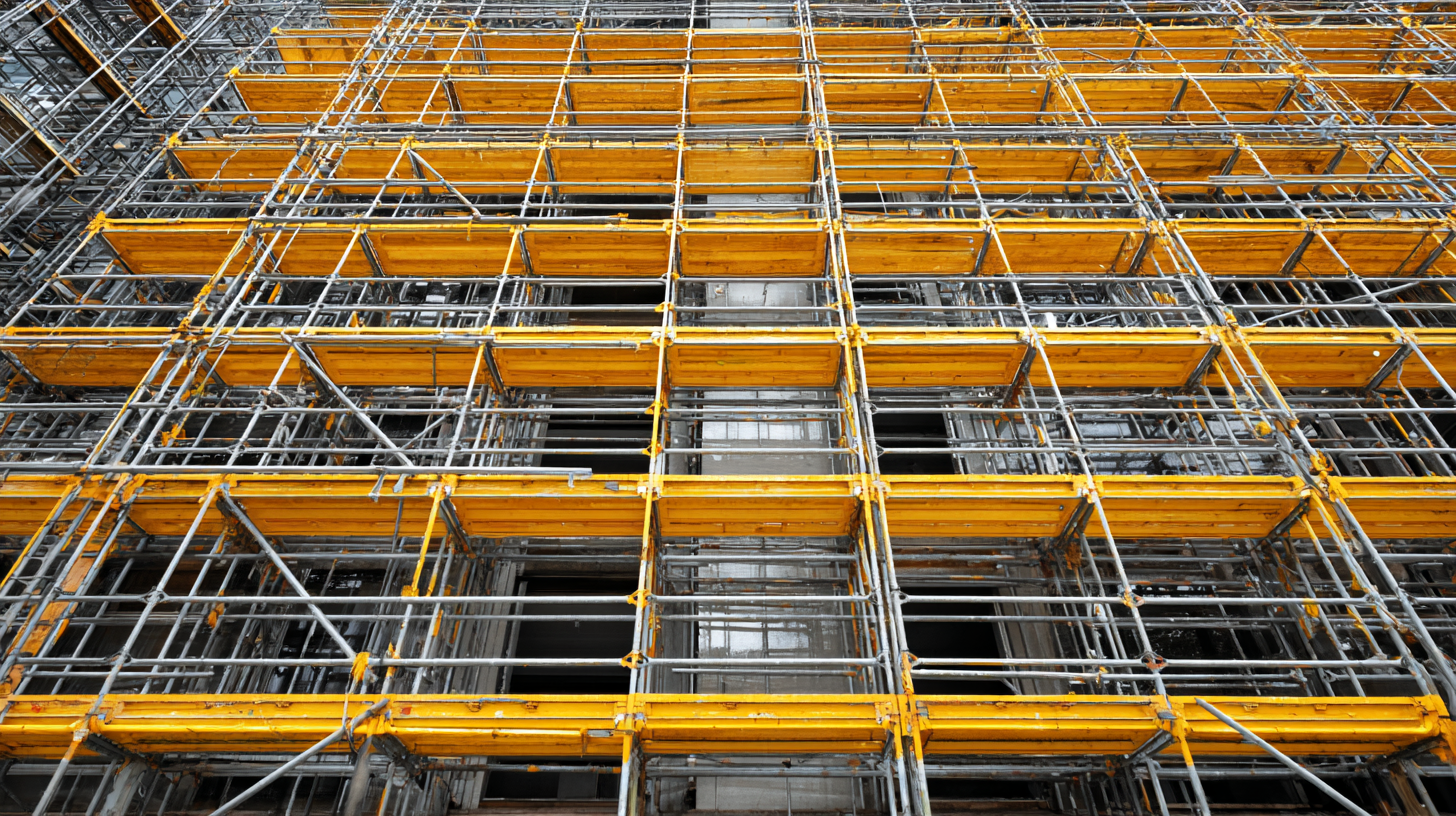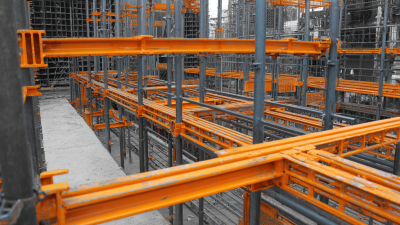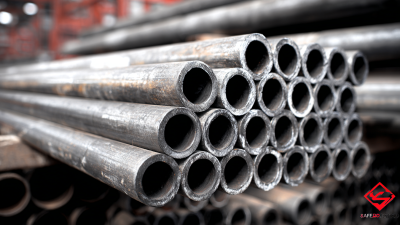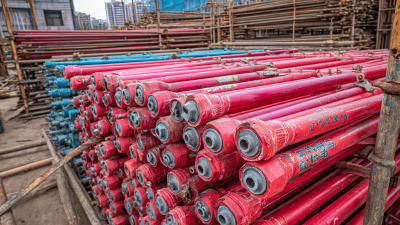 +86 18531741341
+86 18531741341
Leave Your Message
In the ever-evolving landscape of construction, the implementation of effective tools and techniques is crucial for enhancing productivity and safety. One such indispensable asset is Building Scaffolding, which serves not only as a temporary framework for workers but also supports various construction activities at different heights and levels. The advantages of using Building Scaffolding are numerous, ranging from improved safety measures to increased efficiency on-site. By allowing easier access to elevated areas and providing a stable working platform, scaffolding reduces the risk of accidents and injuries, thereby safeguarding workers’ well-being. Additionally, it optimizes workflow by facilitating the rapid completion of tasks that would otherwise be hindered by limited reach. In this blog, we will delve deeper into the multifaceted benefits of Building Scaffolding and offer practical tips for its effective implementation in construction projects, ensuring successful and safe outcomes.

Building scaffolding plays a crucial role in the success of construction projects by ensuring safety and efficiency. It serves as a temporary structure that supports workers and materials while providing access to elevated areas. The basics of scaffolding involve various types, including single or double scaffolds, suspended scaffolds, and mobile scaffolds, each suited for different tasks and site conditions. Understanding these fundamentals helps construction managers choose the right scaffolding system that meets the specific requirements of their projects.
In addition to safety, scaffolding enhances productivity on the job site. Workers equipped with proper access to heights can perform their tasks more effectively, reducing downtime caused by maneuvering equipment or seeking alternative access points. Furthermore, scaffolding can be configured to accommodate additional features like protective coverings, enabling work to continue in adverse weather conditions. This adaptability highlights the importance of scaffolding in contributing to the overall workflow and success of construction projects, making it an indispensable element in the industry.
| Advantage | Description | Safety Improvement | Cost Efficiency |
|---|---|---|---|
| Enhanced Access | Scaffolding provides workers with a stable platform for accessing heights safely. | Yes | Yes |
| Increased Productivity | With better access to work areas, tasks can be completed more quickly. | Yes | Yes |
| Versatility | Scaffolding can be adapted to various building shapes and sizes. | No | Yes |
| Improved Worker Safety | Scaffolding lowers the risk of falls and injuries during construction work. | Yes | No |
| Quick Assembly and Dismantling | Scaffolding can be set up and taken down quickly, saving time on projects. | Yes | Yes |
 Utilizing scaffolding in construction projects significantly enhances worker safety, making it a critical component on job sites. One of the primary advantages of scaffolding is that it provides a secure platform for workers to operate at various heights. This reduces the risk of falls, which are one of the leading causes of injuries in construction. With sturdy railings and non-slip surfaces, scaffolding creates a controlled environment where workers can focus on their tasks without the constant worry of accidental slips.
Utilizing scaffolding in construction projects significantly enhances worker safety, making it a critical component on job sites. One of the primary advantages of scaffolding is that it provides a secure platform for workers to operate at various heights. This reduces the risk of falls, which are one of the leading causes of injuries in construction. With sturdy railings and non-slip surfaces, scaffolding creates a controlled environment where workers can focus on their tasks without the constant worry of accidental slips.
Moreover, scaffolding facilitates the efficient handling of materials and tools, further contributing to safety. Workers can access supplies easily without needing to climb up and down ladders repeatedly, which minimizes the potential for mishaps. Scaffolding also provides ample space for multiple personnel to work simultaneously, allowing for better communication and collaboration. This organization not only promotes safety but also enhances productivity on the job site. Overall, the strategic use of scaffolding is vital for maintaining a safe and efficient working environment in construction projects.
Building scaffolding plays a crucial role in enhancing project efficiency within the construction industry. By providing a secure and stable platform, scaffolding allows workers to access elevated areas safely, which significantly streamlines the overall construction process. The incorporation of scaffolding not only reduces downtime but also minimizes the risks associated with working at heights, making it an essential tool for any construction project.
To optimize the use of scaffolding, consider implementing innovative technologies such as Building Information Modeling (BIM). By integrating BIM with scaffolding systems, project managers can better visualize the construction phases, ensuring that all elements are planned and executed efficiently. This proactive approach not only expedites workflows but also helps in identifying potential issues before they arise.
Tips for maximizing scaffolding efficiency include regular maintenance checks to ensure structural integrity and adherence to safety standards. Additionally, training workers on the specific scaffolding systems in use can lead to increased productivity and fewer on-site accidents. Investing time in proper planning and training fosters a culture of safety and efficiency, ultimately benefiting the overall success of construction projects.
The cost-effectiveness of scaffolding in construction projects cannot be understated. By providing a stable and accessible working platform, scaffolding significantly enhances productivity during various construction tasks. Crew members can work at heights without the added burden of cumbersome ladders or lifts, allowing for smoother operations and less downtime. This efficiency translates directly into time savings, as work can progress more quickly and with less risk of injury, ultimately reducing labor costs.

Additionally, the use of scaffolding optimizes resource management on-site. Instead of investing heavily in specialized machinery or prolonged manual labor, scaffolding offers a versatile and scalable solution that can adapt to the unique requirements of any project. This flexibility ensures that materials and labor are utilized effectively, minimizing waste and unnecessary expenses. Overall, integrating scaffolding into construction not only improves safety and operational flow but also delivers a financially sound option that benefits the overall budget of any construction endeavor.
Scaffolding plays a crucial role in modern construction, particularly due to its remarkable versatility. One of the primary advantages of scaffolding is its ability to adapt to a wide range of building designs and structures. This adaptability allows contractors to effectively manage complex projects that require customized solutions, ensuring that every unique architectural feature can be safely and efficiently accessed. For instance, when working on irregularly shaped buildings or historical renovations, scaffolding can be tailored to fit the contours and dimensions of the structure, providing necessary support without compromising aesthetic integrity.
Moreover, the use of scaffolding enhances safety and productivity across various construction sites. By providing stable platforms for workers and materials, it minimizes the risks associated with working at heights. Scaffolding systems can be assembled in multiple configurations, making it suitable for both small-scale residential projects and large commercial developments.
As construction demands evolve, the versatility of scaffolding remains a key asset, accommodating diverse designs while ensuring adherence to safety regulations. This adaptability not only facilitates efficient workflows but also empowers builders to pursue innovative designs that elevate the standard of construction projects.






